On the Trail of Wild Orchids in the foothills of the Vercors
Hi everyone, I hope you are all well. Today, I went for a botanical walk in search of those wild beauties that are orchids, but we will of course see many other species native to this part of the Drôme, one of the most beautiful departments in France for me. And I'm not just saying that because I was born and raised there ! Well, maybe a little bit ^^
It's one of the regions covered by several preserved natural parks and if I'm not mistaken, one of the places in the country where the most organic food is grown. So naturally there are a lot of people with so-called "alternative" lifestyles who build a different worldview than what the industrialists - be it media, institutions or politicians - want for the majority. Always remember: 99.9% vs 0.1% 😉 But it is not necessarily this in particular that I want to talk about, even if everything that has to do with freedom is related to it since it automatically opposes the will to control.
To end this chapter and before starting this walk in the foothills of the Vercors, this high place of resistance, I would like to share with you one last analysis. For me, the best way to resist is to create. Opposition is important, but to a certain extent, it can also be completely sterile, by opposing, we create a negative of the antagonistic forces and this negative, well, it is not necessarily what we aspire to, what we desire for the world and in the end, by only opposing, we risk losing time!
Having said that, let's start this journey together !
Every good walk starts with a path, and I must say that this one is quite ideal in its style. A dirt track, passable but with vegetation that is just waiting for a little time to take over the whole surface and if for two years, no car would use it, this track would be completely green again !
On the low sides, among those species that are just waiting for a little time to take over the land, are the "pope's coins" which is the traditional name for the annual Lunaria - Lunaria annua. When the plant dries out at the end of summer, all these little "moons" split open and spread the seeds of future generations.
One of its neighbors is the Montpellier soapwort - Saponaria ocymoides, a tiny pink flower with five petals that grows by the thousands on the sides of the surrounding paths.
Its name "Saponaria" comes from the same word as "soap" because this plant contains a molecule that can lather like soap.
Here is a first view of the environment where we will evolve... Rather paradisiacal and wild in the idea, no ?
A little further along the road, there is a mixture of dozens of species of grasses and other flowers that I don't necessarily know yet...
But here, the star plant is really the thyme that grows wild. You might think it's the same species, but with my brother, who is a botanist by training, we have identified more than 15 varieties of this same family of Lamiaceae.
Here, it is found in whole pink, white and purple bushes and let me tell you that I pick some up every time for my recipes in Paris. But be careful to leave the root in place so as not to kill the plant !
In the background, if you look closely, you can see the little village of Gigors which I have already shown you and above which we went to see the ruins of the old Savel castle.
Here we are at the end of this first little path, at the point where it joins the road, and I wanted to share these beautiful tracks on the pasture opposite, which testify to the activity of the shepherds in the area.
From there we can see the little chapel of the village of Gigors... In the background, we have the small Saint-Pancrace mountain, named after an Italian saint who founded a small monastery-hermitage that we may go and see one day. But let's continue our exploration.
The small path resumes on the hillside, still with a breathtaking view and lined with dozens of plant species, gorse, pubescent oak and of course, thyme in abundance !
You can't see it in the pictures, but it was an extremely windy day and I had a hard time photographing this small and delicate butterfly. As much as I can recognize some plant species, I am a real newbie for insects :)
In the course of our peregrinations, we come across a "Muscari à toupet" or Leopoldia comosa. From the Muscari family, which includes about thirty varieties, this one has a sort of small bulb that looks like an onion and is edible after cooking. Of course, I recommend that you do your own research before consuming this on the basis of what I say !
The route continues with still incredible and magnificent views and in particular this pyramid-shaped prominence... But one of the objectives, in addition to the simple pleasure of the walk, is to find these wild orchids which I was told grow a little higher in some pastures.
I open my eyes more and more as I go up and without always spotting these specific plants, I make a little spot of the other species that one can find. Here, this tree with its white flowers, I believe that it is indeed a hawthorn - Crataegus of the family of Rosaceae and which interests me particularly at the moment as one could graft on the trunk of apple and pear trees and thus benefit from the qualities of robustness and resistance to the dryness of the plant.
There, the beautiful sprigs of common sage in flower are swaying against the yellow background of the gorse. Salvia pratensis belongs to the same family as thyme (the Lamiaceae). The properties of the plant are the same as those of the officinal thyme, although it is stronger. It is therefore digestive as well as antispasmodic and sedative. Be careful, however, to consume it dry and not fresh in order to avoid thujone, which is neurotoxic.
We turn over the same view with a little more height and I feel that we will soon arrive at the place I have been indicated... Behind the four poplars, the village of Gigors always !
At the bend of a small wood I discover some Sorbier des oiseleurs or white Alisiers - Sorbus aria. They too belong to the Rosaceae family like the hawthorn and produce fruit that is particularly appreciated by birds, but which can also be eaten raw and made into delicious marmalades !
Finally, here we are ! I didn't go to the wrong place and in this pasture, near the small wood, I spot my first wild orchids !
This is the purple orchid or little damsel - Orchis purpurea. It blooms from March to June. I only took these few specimens of the same species but at this location there were several dozen scattered around.
A little further along the edge of the small wood, I spot another variety : Monkey orchid or Orchis simia. Of the two species I will come across today, I think this one is my favorite, as it is a little more colorful and perhaps also reminds us a little more of our "domestic" orchids, by its shape and especially its colors.
Mission accomplished :) I'm going back, still looking at everything carefully, but as it's the same path, I'm hardly taking any more pictures, except this one with my initial direction now behind me, leaving the orchids to their meadow and hoping that they will fertilize each other and be even more numerous next year !
Voilà, that is all for today !
... and that's good enough yet :)
I hope that this article and this botanical walk with me have pleased and interested you ! Thank you for your visit and the time you spent reading, I look forward to your comments :)
Have a great day and take good care of yourself, I'll see you soon,
<3
Salut à tous, j'espère que vous allez bien. Aujourd'hui, je suis parti pour une randonnée botanique à la recherche de ces beautés sauvages que sont les orchidées, mais on verra bien entendu de nombreuses autres espèces autochtones de cette partie de la Drôme, un des départements pour moi les plus beaux de France. Et je ne dis pas seulement cela parce que j'y suis né et que j'y ai grandi ! Enfin quand même peut-être un peu ^^
C'est une des régions couvertes de plusieurs parcs naturels préservés et si je ne me trompe pas, un des endroits du pays où l'on fait pousser le plus de denrées alimentaires biologiques. On trouve donc tout naturellement un grand nombre de gens au styles de vies dits "alternatifs" et qui construisent une vision du monde différente que ce que les industriels - que cela soit des médias, des institutions ou des politiques - veulent pour la majorité. Rappelez vous toujours : 99,9% vs 0,1% 😉 Mais ce n'est pas forcément de cela en particulier dont je souhaite vous parler, même si tout ce qui a attrait à la liberté s'y rapporte puisque cela s'oppose automatiquement à la volonté de contrôle.
Pour terminer sur ce chapitre et avant de commencer cette promenade sur les contreforts du Vercors, ce haut lieu de résistance, je voudrais vous partager une dernière analyse. Pour moi, la meilleure manière de résister c'est de créer. L'opposition est importante, mais dans une certaine mesure, elle peut aussi être complètement stérile, en s'opposant, on créer un négatif des forces antagonistes et ce négatif, et bien ce n'est pas forcément ce à quoi on aspire, ce quel l'on désire pour le monde et au final, en s'opposant seulement, on risque de perdre du temps !
Ceci étant dit, commençons ensemble cette randonnée !
Toute bonne balade qui se respecte commence par un chemin, et je dois dire que celui-ci est assez idéal dans son style. Un sentier de terre, carrossable mais avec une végétation qui n'attend qu'un peu de temps pour reprendre toute la surface et si pendant deux ans, aucune voiture ne l'empruntait, ce tracé redeviendrai complètement vert !
Sur les bas côtés, parmi ces espèces qui n'attendent qu'un peu de temps pour reprendre le terrain, on retrouve les "monnaies-du-pape" qui est le nom traditionnel pour la Lunaire annuelle - Lunaria annua. Lorsque la plante est sèche à la fin de l'été, toutes ces petites "lunes" s'ouvrent en deux et répandent les graines des futures générations.
Une de ses voisines, c'est la Saponaire de Montpellier - Saponaria ocymoides, une toute petite fleur rose à cinq pétales et qui pousse par milliers sur les bas-côtés des chemins environnants.
Son nom de "Saponaire" viens du même mot que "savon" car cette plante contient une molécule qui peut mousser comme du savon.
Voilà une premières vues de l'environnement où nous allons évoluer... Plutôt paradisiaque et sauvage dans l'idée, non ?
Un peu plus loin sur la route, on retrouve un mélange de dizaines d'espèces de graminées et d'autres fleurs que je ne connaît pas forcément encore...
Mais ici, la plante phare, c'est vraiment le thym qui pousse à l'état sauvage. On pourrait croire qu'il s'agit là de la même espèce et pourtant avec mon frère qui lui est vraiment botaniste de formation, on a recensé plus de 15 variétés de cette même famille des Lamiacées.
Ici, on le retrouve par buissons entiers roses, blancs et violets et laissez moi vous dire que j'en ramasse à chaque fois pour mes recettes à Paris. Mais attention à bien laisser la racine en place pour ne pas trucider la plante !
Au fond, en regardant bien, on peut apercevoir le petit village de Gigors que je vous ai déjà montré et au dessus duquel nous étions allés voir les ruines de l'ancien château du Savel.
Nous voilà au bout de ce premier petit chemin, à l'endroit où celui-ci rejoint la route et j'ai tenu à partager ces très belles traces sur le pâturage d'en face qui témoigne de l'activité des bergers dans le coin.
De là on voit très bien la petite chapelle du village de Gigors... En arrière plan, on a le petit mont du Saint-Pancrace, nommé d'après un saint italien qui avait fondé un petit monastère-ermitage que nous irons peut-être voir un jour. Mais continuons notre exploration.
Le petit chemin reprend à flan de colline, toujours avec une vue imprenable et bordé de dizaines d'espèces végétales, des ajoncs, des chênes pubescents et bien sûr, du thym à foison !
On ne s'en rend bien sûr pas bien compte sur me images, mais cette journée était extrêmement venteuse et j'ai beaucoup de mal à photographié ce petit et délicat papillon. Autant je peux reconnaître les certaines espèces de plantes, autant je suis un vrai débutant pour les insectes :)
Au fil de nos pérégrinations, on rencontre une Muscari à toupet
ou Leopoldia comosa. De la famille des Muscari qui regroupe une trentaine de variétés, celle-ci à une sorte de petit bulbe qui ressemble à un oignon et qui serait comestible après cuisson. Bien entendu, je vous recommande de faire vos propres recherches avant de consommer cela sur mes simples dires !
La route se poursuit avec toujours des vues incroyables et magnifiques et notamment cette proéminence en forme de pyramide... Mais un des objectifs, en plus du simple plaisir de la marche, c'est bien celui de trouver ces orchidées sauvages dont on m'a dit qu'elles poussaient un peu plus haut dans certains pâturages.
J'ouvre l'oeil de plus en plus au fur et à mesure de mon ascension et sans toujours repéré ces plantes spécifiques, je fais un petit repérage des autres espèces que l'on peut trouver. Ici, cette arbre avec ses fleurs blanches, je crois qu'il s'agit bien d'une aubépine - Crataegus de la famille des Rosaceae et qui m'intéresse tout particulièrement en ce moment comme on pourrait greffer sur le tronc des pommiers et des poiriers et ainsi bénéficier des qualités de robustesse et de résistance à la sécheresse de la plante.
Là, les beaux brins de Sauge commune en fleurs se balancent sur le fond jaune des ajoncs. Salvia pratensis de la même famille que le thym (les Lamiacées). Les propriétés de la plante sont les mêmes que celle dite officinale bien que plus forte. Elle est donc digestive ainsi qu'antispasmodique et sédative. Attention tout de même à la consommer sèche et non pas fraîche afin d'éviter la thuyone qui est neurotoxique.
On tourne au dessus de la même vue avec un peu plus de hauteur encore et je sens que nous arrivons bientôt à l'endroit que l'on m'a indiqué... Derrière les quatre peupliers, le village de Gigors toujours !
Au détour d'un petit bois je découvre quelques Sorbiers des oiseleurs ou Alisiers blanc - Sorbus aria. Eux aussi sont de la famille des Rosacées comme l'aubépine et ils produisent des fruits particulièrement appréciés des oiseaux, mais que l'on peut aussi manger crus et dont on peut faire de délicieuses confitures !
Enfin, nous y voilà ! Je ne me suis pas trompé d'endroit et dans ce pâturage, près du petit bois, je repère mes premières orchidées sauvages !
Ici il s'agit d'Orchis pourpre ou petite demoiselle - Orchis purpurea. Sa floraison s'étale de mars à juin. Je ne n'ai pris que ces quelques spécimens de la même espèce mais à cette endroit il y en avait plusieurs dizaines disséminés.
Un peu plus à la lisière du petit bois, j'en repère une autre variété : Orchis singe ou Orchis simia. Des deux espèces que je croiserai aujourd'hui, je pense que celle-ci est ma préférée, car elle est un peu plus colorée et nous rappelle peut-être aussi un peu davantage nos orchidées "domestiques", par se forme et surtout ces couleurs.
Voilà ma mission accomplie :) Je rentre en continuant de tout regarder avec attention, mais comme c'est le même chemin, je ne prends presque plus d'images, hormis celle-ci avec ma direction initiale désormais dans mon dos, laissant les orchidées à leur pré en espérant qu'elles se fertilisent mutuellement et qu'elles soient encore plus nombreuses l'année prochaine !
Voilà, c'est tout pour aujourd'hui !
Et c'est déjà pas mal :)
J'espère que cet article et cette randonnée botanique à mes côtés vous aurons plût et intéressés ! Merci pour votre visite et le temps de votre lecture, j'attends vos commentaires avec plaisir :)
Excellente journée à tous et prenez bien soin de vous, je vous dis à très bientôt,
<3
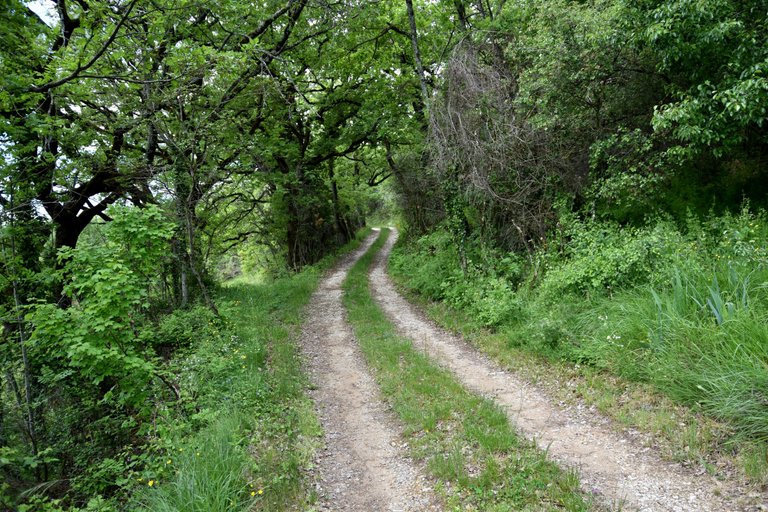
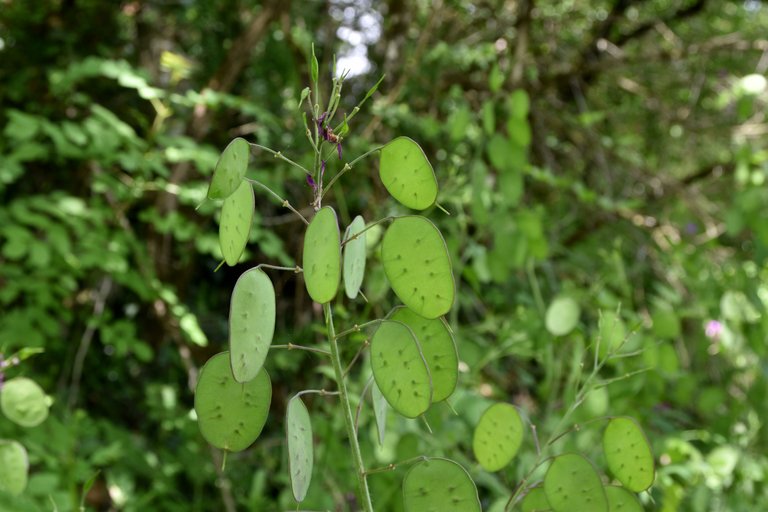
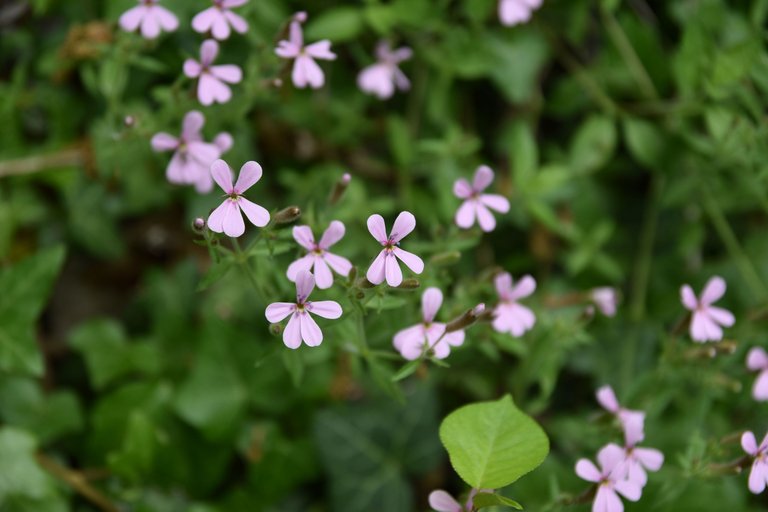
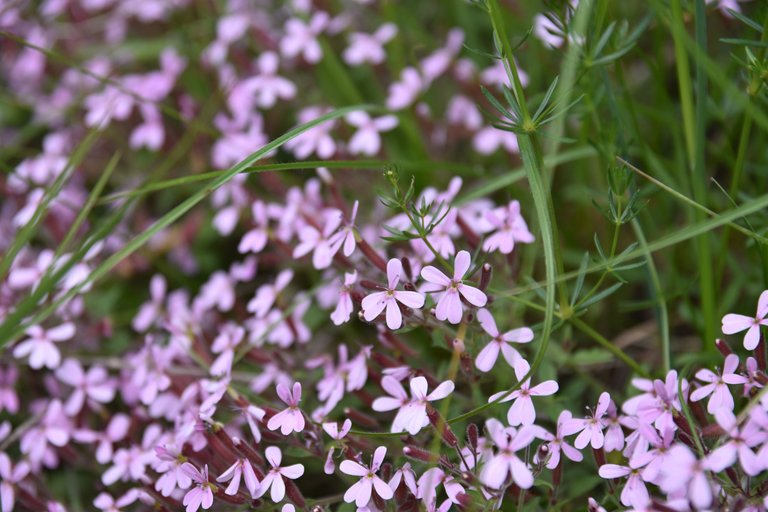
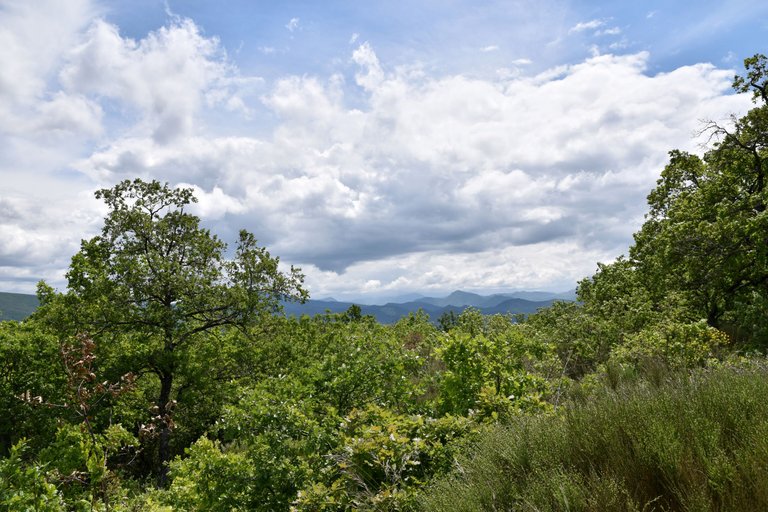
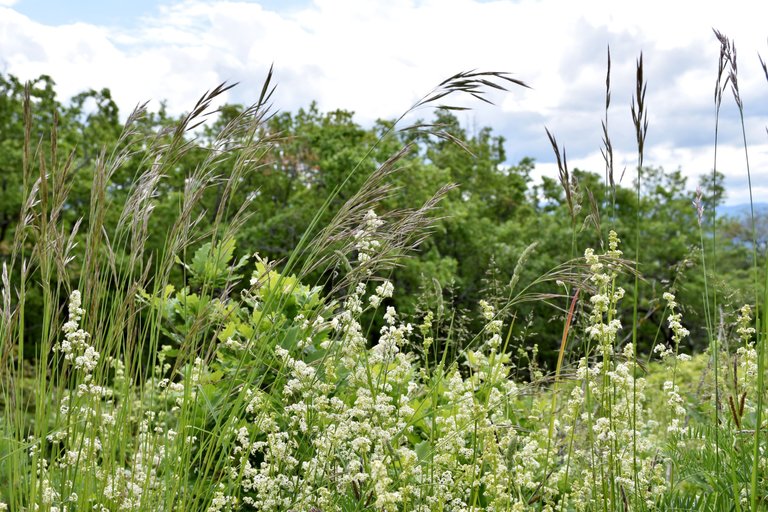
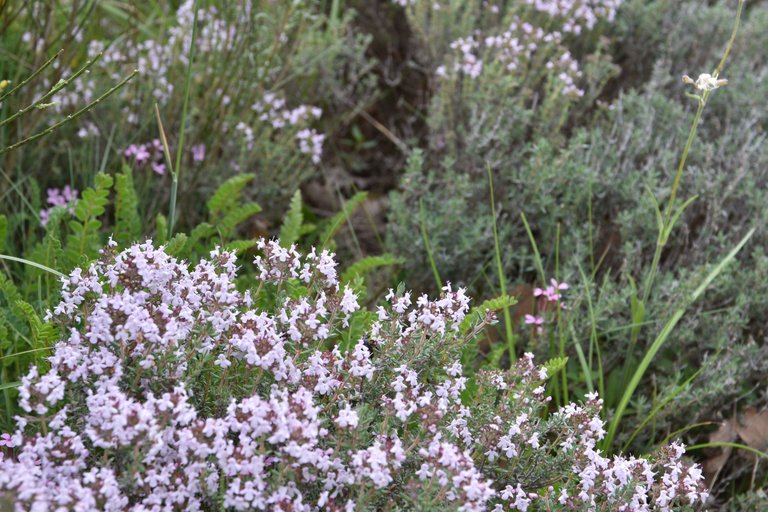
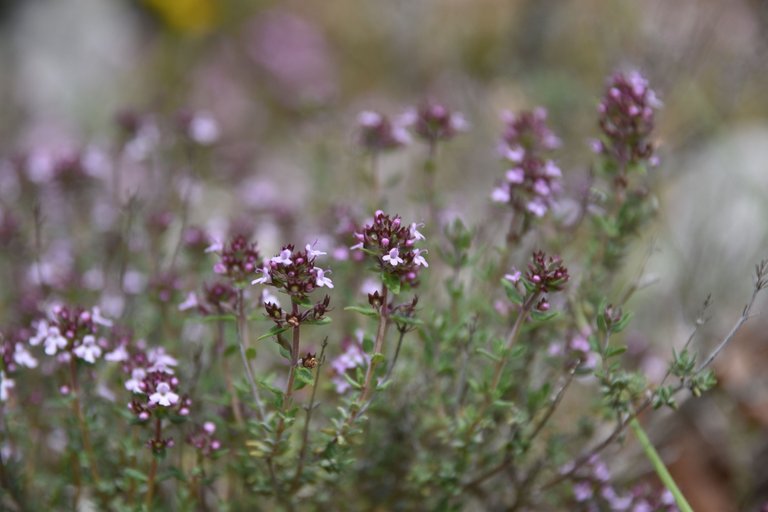
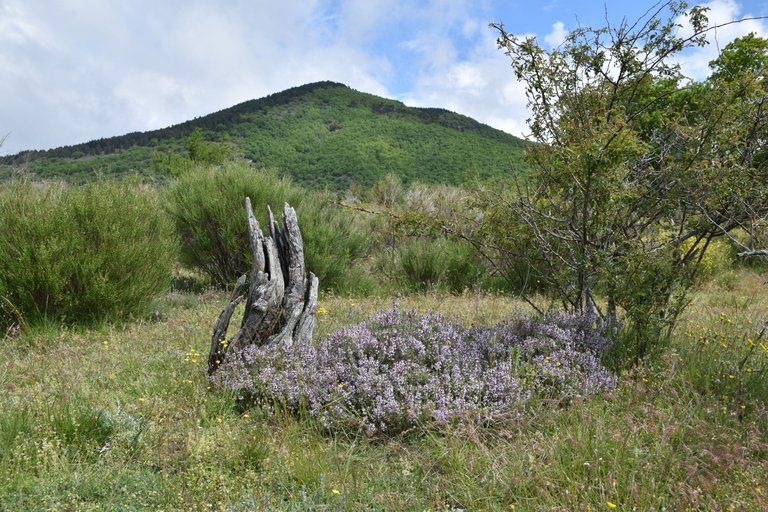
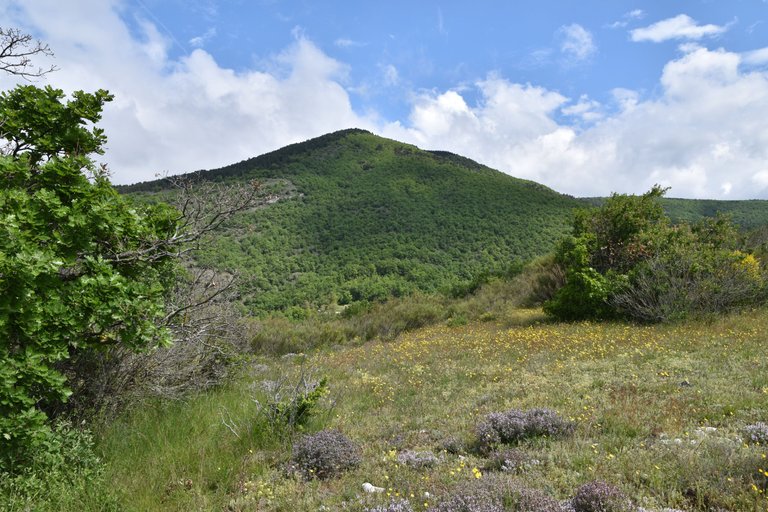

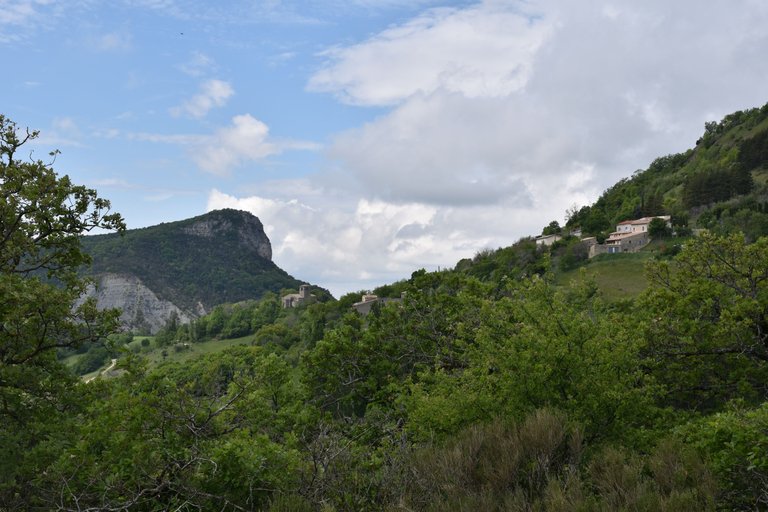

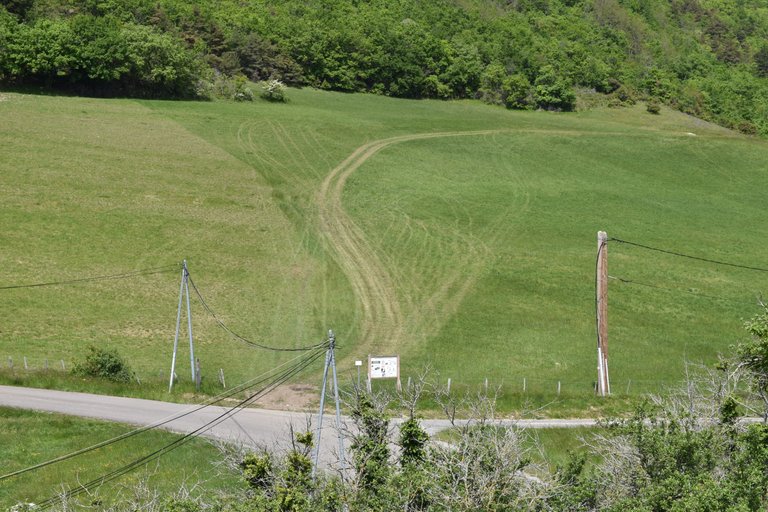
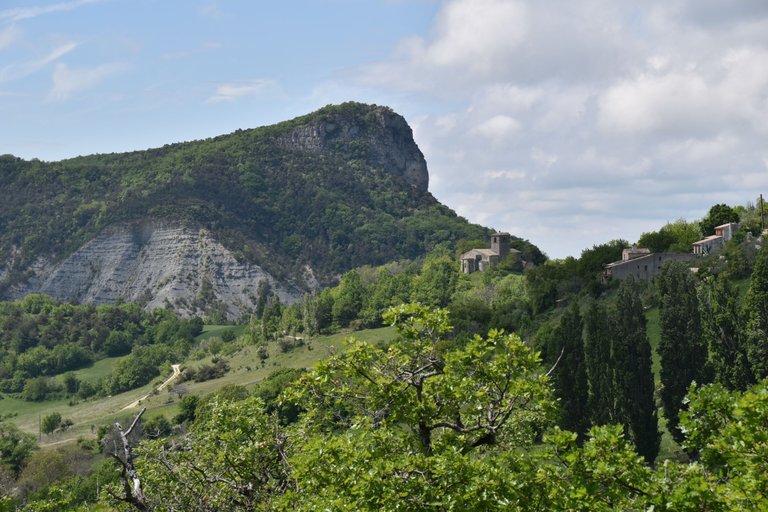
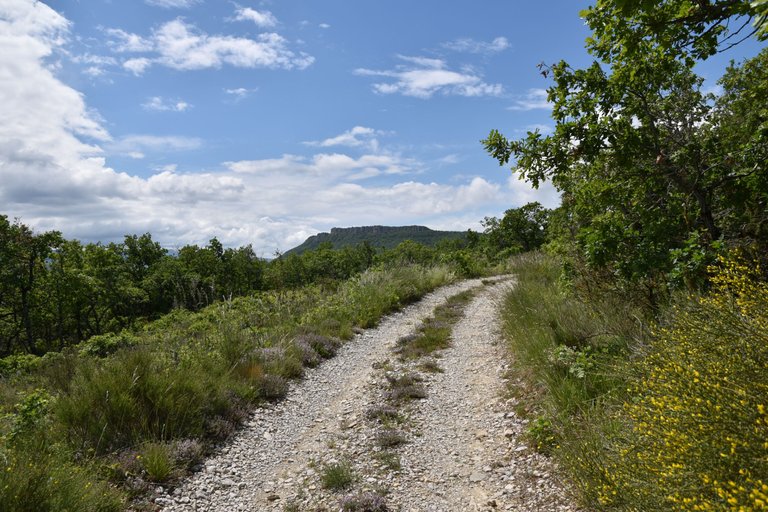
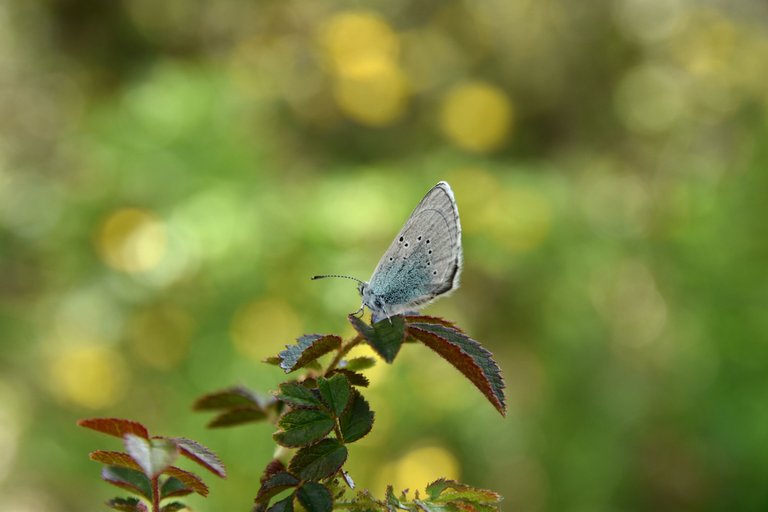
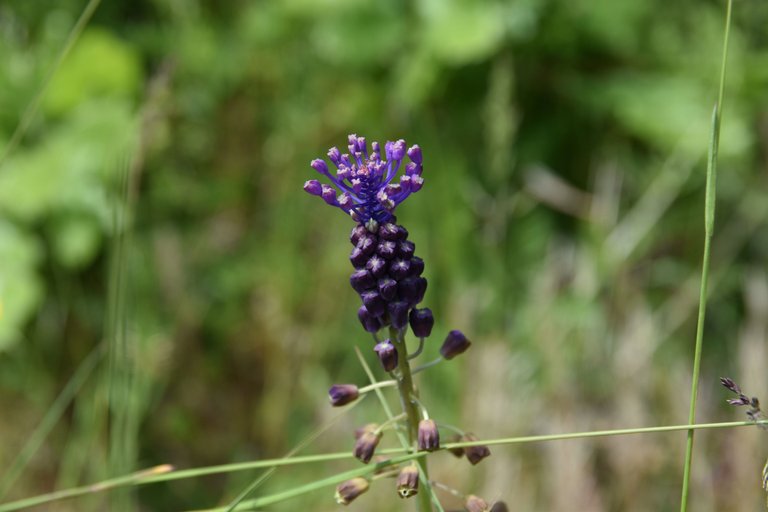
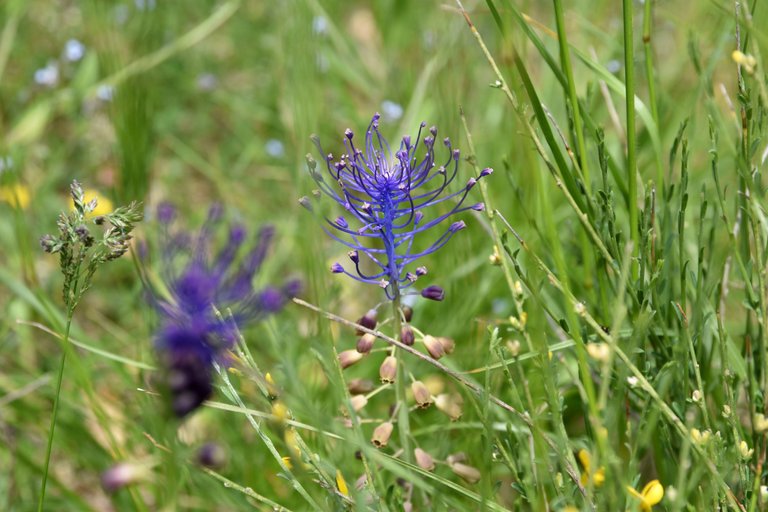

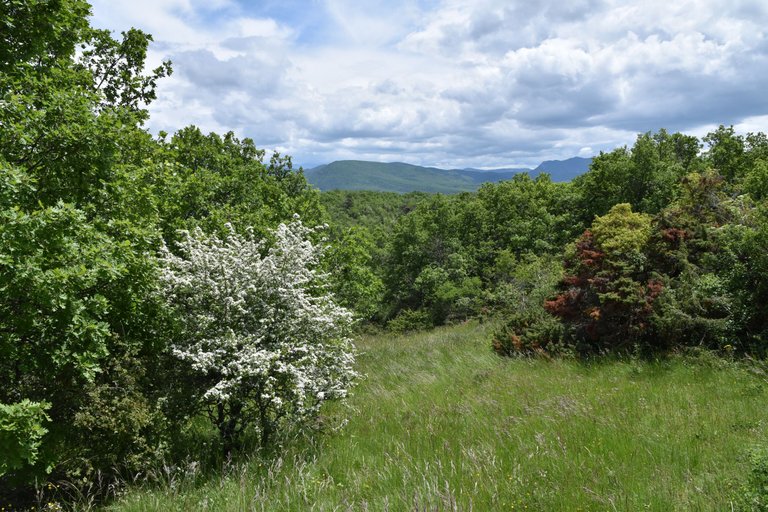
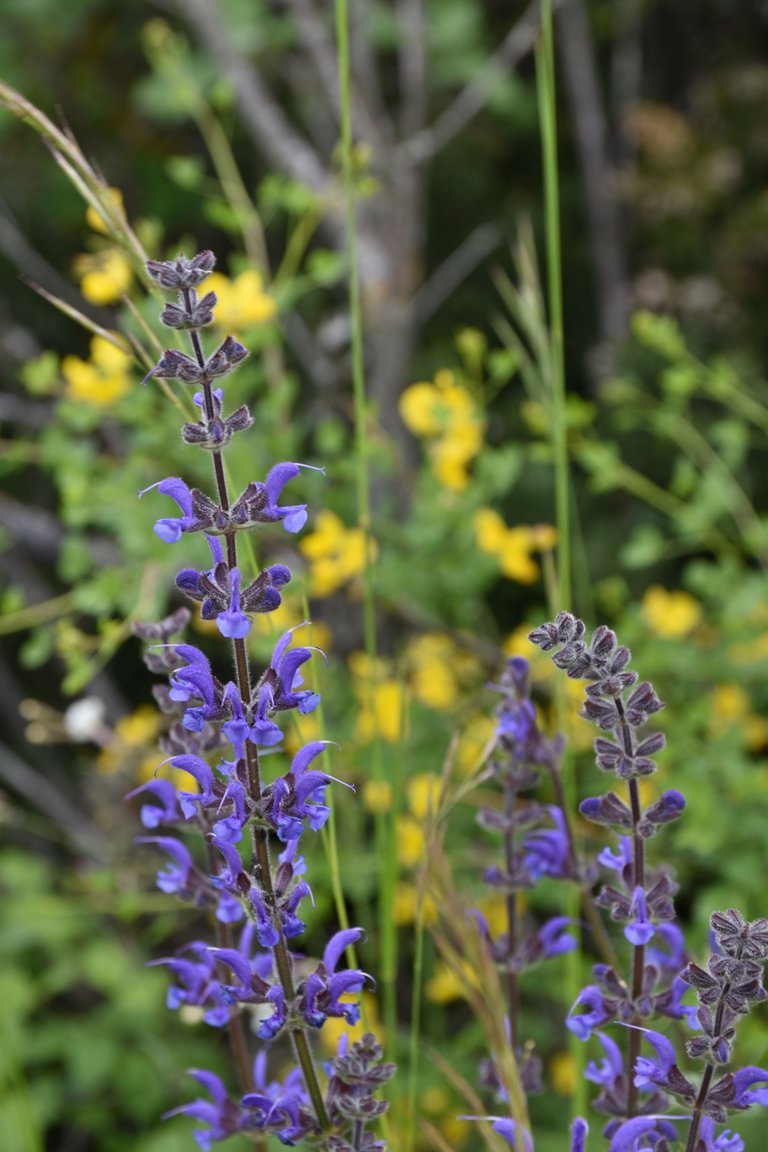
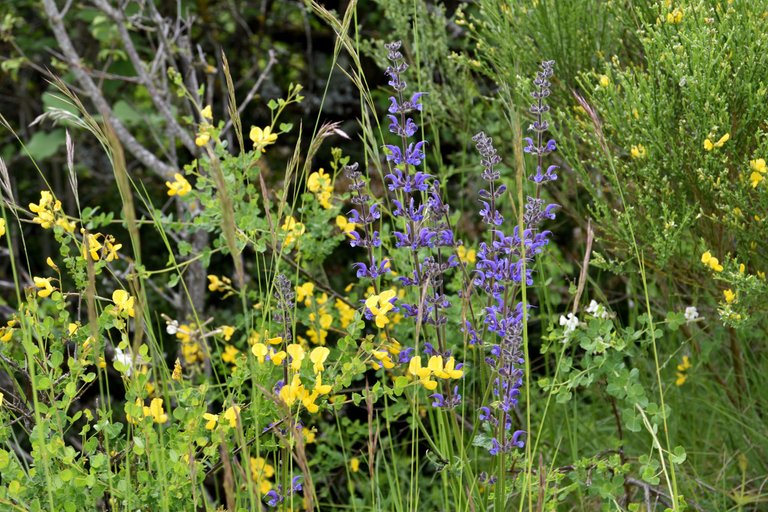
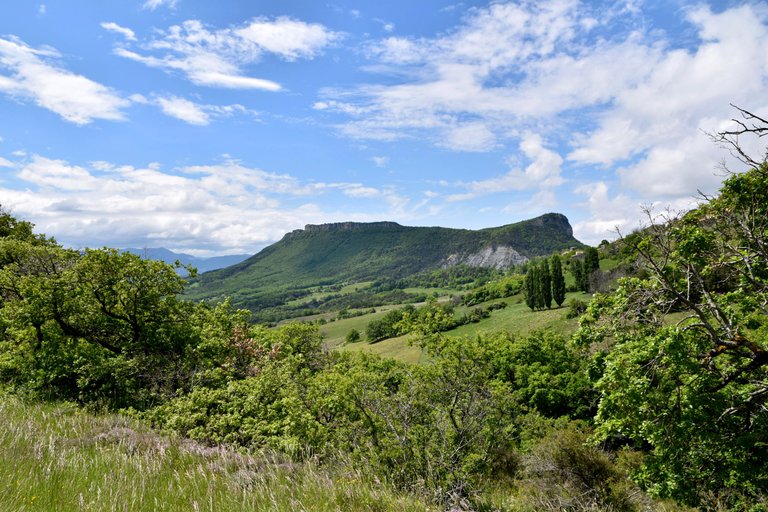
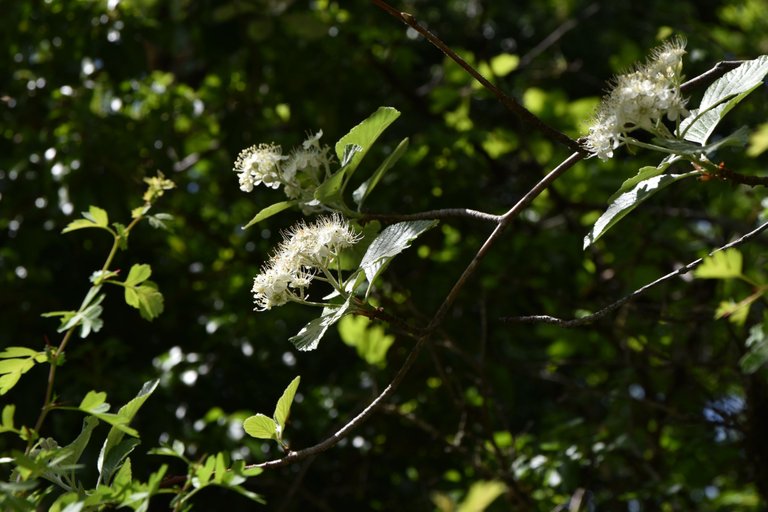
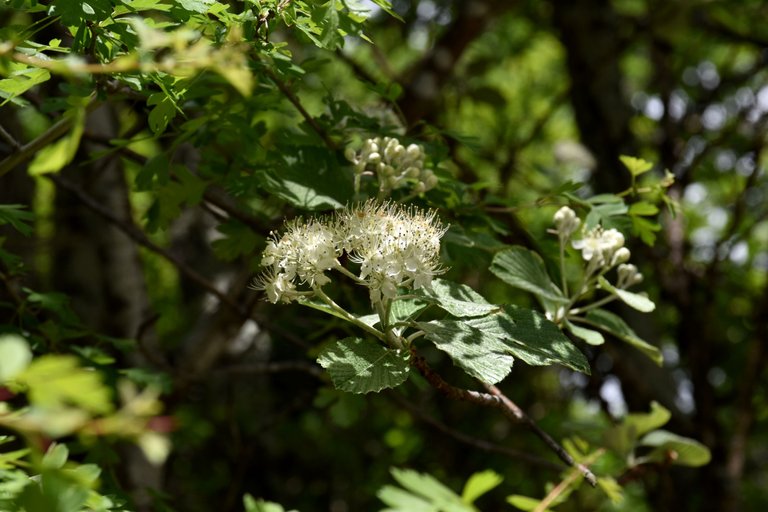
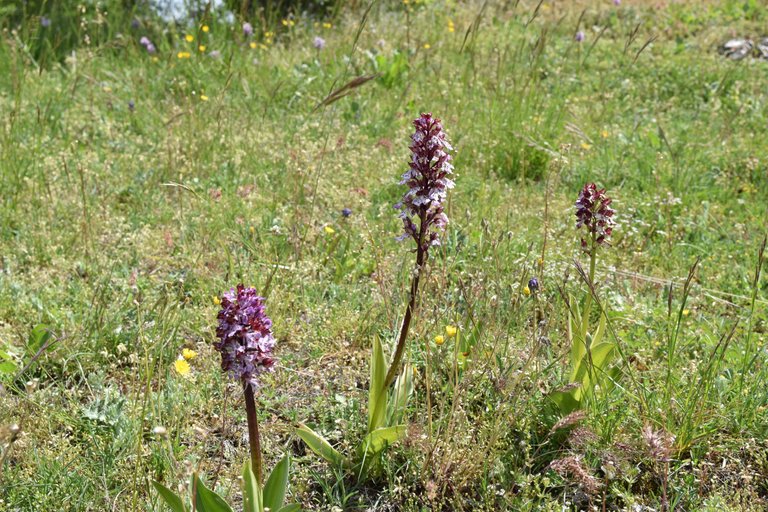

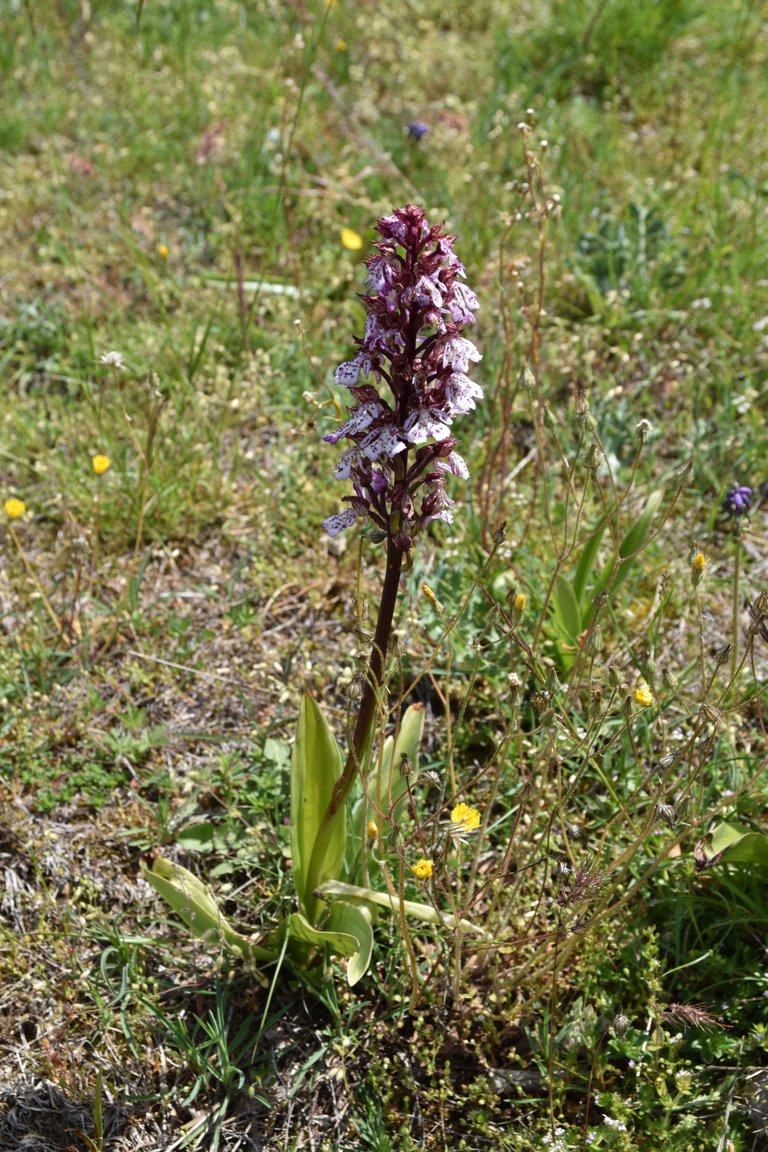
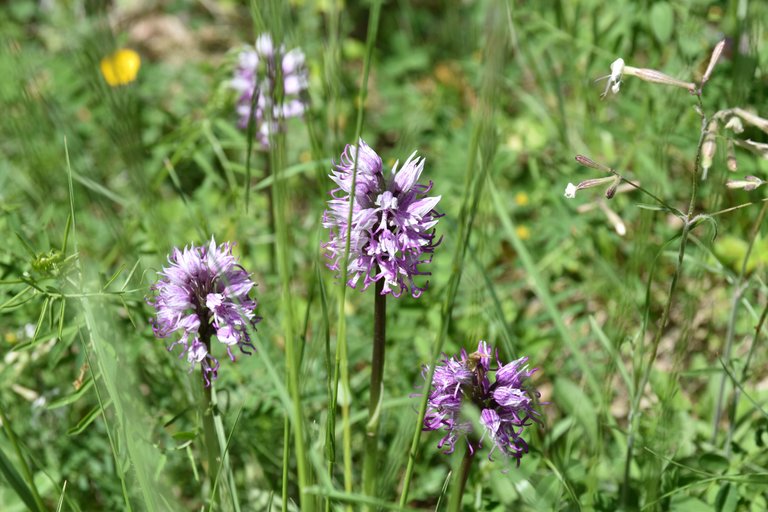
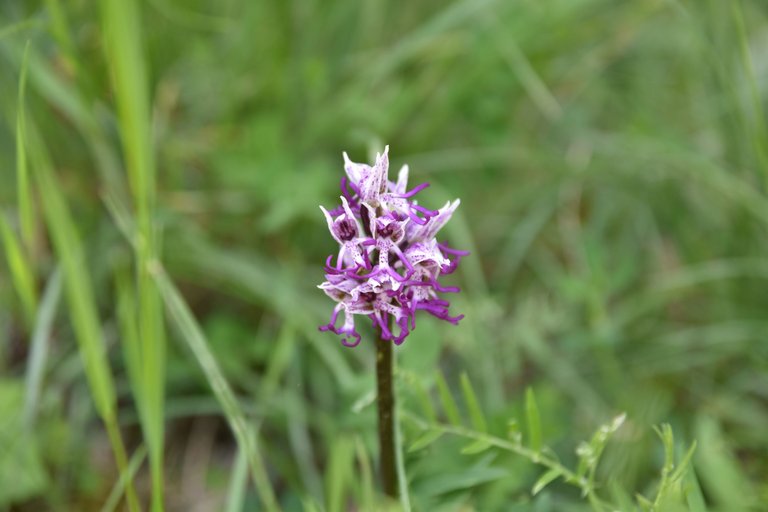
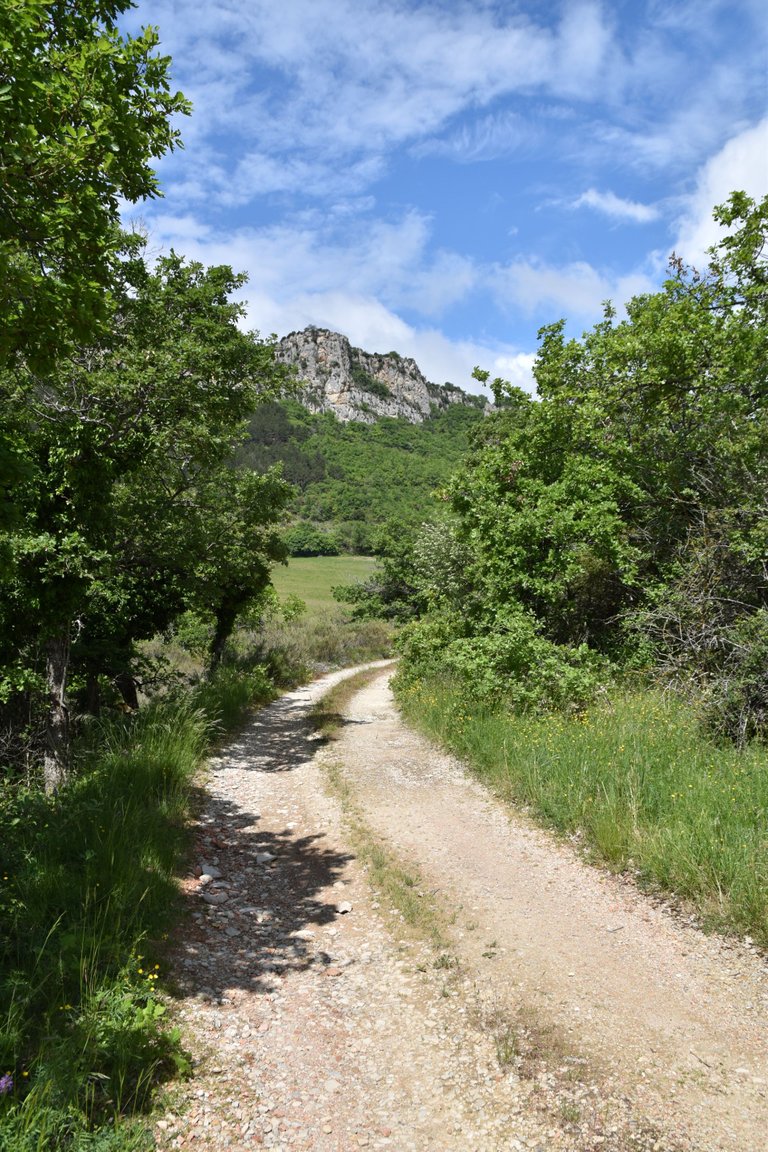
Congratulations, your post has been added to Pinmapple! 🎉🥳🍍
Did you know you have your own profile map?
And every post has their own map too!
Want to have your post on the map too?
Wow, that's an amazing place. The natural scenery is very beautiful. Likewise with the orchids there. Very gorgeous
Hey @heartofdarkness ✌️ Thanks for letting me that you enjoyed this one 😊
Have a good day dear !
Thank you 😊
I didn't know that there was something like wild orchids. I always thought they were somehow domesticated 🙂 I'm actually quite good with recognizing insects and I'm learning to recognize 'weeds' as many of them are edible and I don't want to waste an opportunity for a good salad 😂
Lovely photos of a beautiful region. Thank you and have a great day!
I knew it, but it was the first time I see those :))
For insects, I'm just good for the very common, after for edible plants I'm a bit more skilled hehe ^^
Of course, that would be such a pity 😂 !
Plus most of those plants are more nutritious than the common and domesticated ones..!
Have a good day dear 😇
Wonderful walk with a magnifique view <3
Indeed, it was a very enjoyable one and I'm happy you'd enjoy it :D
Relaxing view :)
😊✌️
https://leofinance.io/threads/view/saggi07/re-leothreads-8uvgyfxl
The rewards earned on this comment will go directly to the people ( saggi07 ) sharing the post on LeoThreads,LikeTu,dBuzz.
Thanks @anttn, we were just enjoying a post we read before yours from @melinda010100 where birds were named and reminded us of our young classes of natural science and botanic. Another aspect of what the web3 decentralized @Hive has to offer to/from many and from everywhere, all continents and all of this can't be stolen spoiled destroyed or burnt. Immortalizing by pics and texts, thanks again and Best+
Indeed, it's one of the reasons I like this place so much... Thank you for visiting, have a good Sunday 🌱